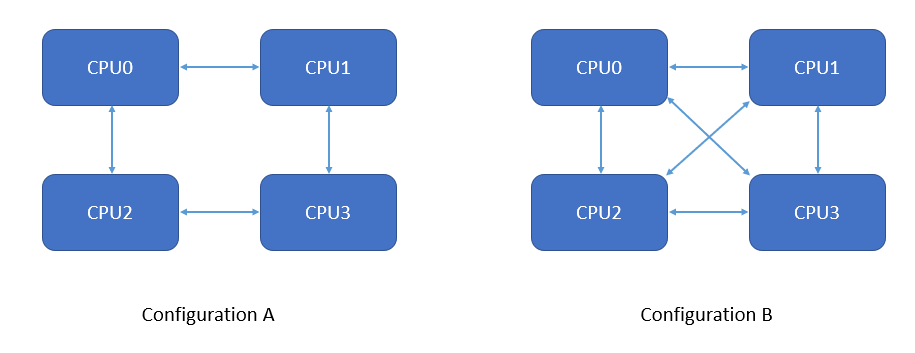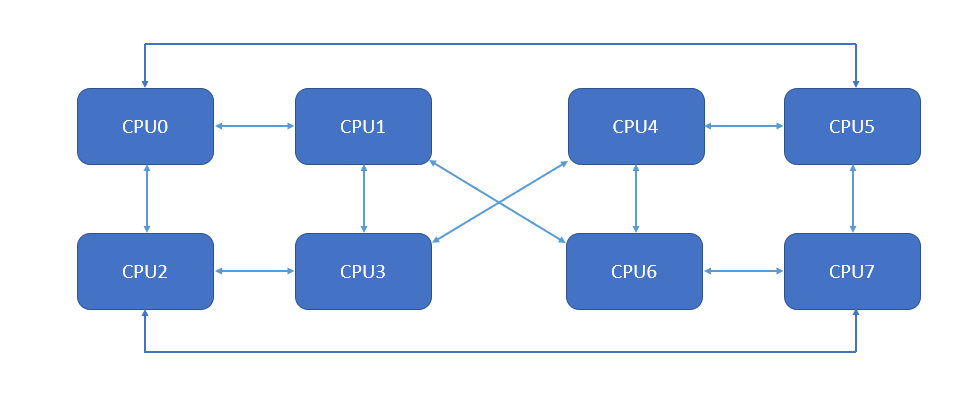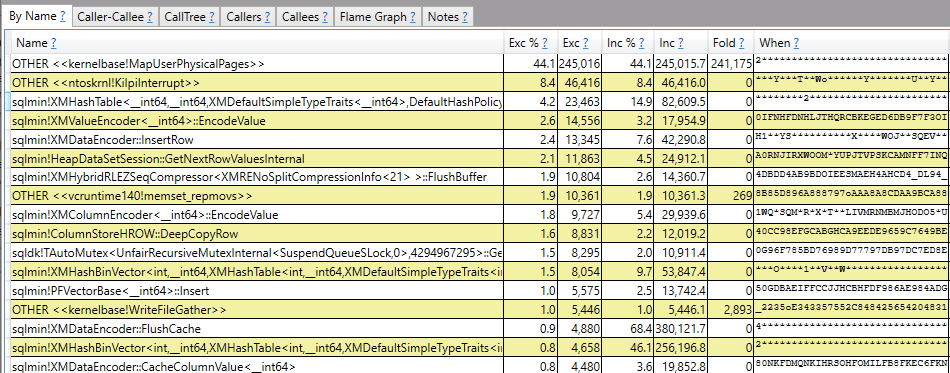I had a brief opportunity to do SQL Server workload testing on an eight socket server. It didn’t go well.
Sockets
I’ll give an extremely brief introduction to NUMA and sockets because I have a bit more free time these days. You’re probably reading this blog post on a machine with a single socket. All that means is that there’s a single CPU chip plugged into the motherboard. All of the RAM for the machine is local to that CPU chip. The recent king of single socket performance for SQL Server is the Intel 8280. 28 cores at 2.7 GHz with the latest instruction sets is quite a lot of processing power. There’s a newer chip out there now but it’s not clear to me if anyone can buy it yet.
What can you do if a workload can’t be scaled out and it needs more than the CPU power available with a single socket solution? A two socket solution could be the answer. A two socket server has two CPU chips plugged into different slots on a motherboard and each CPU has a local bank of RAM. Any part of memory can be access by either CPU but there is a performance penalty for foreign memory access, which is just accessing memory from a different CPU. See the simple diagram below:

As mentioned earlier, it is more expensive for CPU0 to access memory local to CPU1 compared to its own local memory. The performance penalty of NUMA will depend on the workload as well as the hardware. It can range from not noticeable at all to a serious issue that needs to be addressed in some way. In some situations this can be as easy as convincing your VM admin to change how the VM is set up. In others, your best bet may be to figure out a way to keep the workload on a single socket. Some folks advocate for single socket solutions compared to two socket solutions for OLTP workloads due to the NUMA penalty.
Perhaps you are wondering what happens if a workload needs more power available from a two socket server? Enter the four socket server. Four socket servers have four slots for CPU chips. An Intel 8280 processor in a four socket configuration gives you a total of 112 physical cores. That’s a lot. Four socket servers are more expensive than two socket servers and are significantly less common to find in data centers. Often, they are a custom order which makes months for the hardware vendor to build and deliver. In addition, the connections between CPUs are more complicated. Below are two common configurations:

Under configuration A, it takes two hops for CPU0 to access memory local to CPU3. That will increase latency more than going to CPU1 or CPU2. However, memory latency between CPUs won’t be the same for all pairs even in configuration B. In addition, it’s more complicated for SQL Server to try to manage memory on a four socket box. Even in the best case scenario for memory management, by design everything stored in SQL Server owned memory isn’t NUMA aware, such as the columnstore object pool. Nonetheless, if you need more CPU than a two socket server or VM can provide then you’re stuck living with the complexities of a four socket solution.
What if you need even more power? Hardware manufacturers once again have you covered with eight socket servers. These are even more expensive and uncommon than four socket solutions. Different vendors handle NUMA differently. There are simply more possible permutations with eight CPUs compared to four. I’m told that the following is an example layout for an eight socket machine:

I’m not a NUMA expert by any means. However, I think it’s fair to say that it looks a lot more complicated. There are many more instances where accessing foreign memory will take two hops instead of one. I also don’t see a way to carve out a four socket VM with all CPUs just one hop away. All in all, that diagram makes me nervous. As a final note, eight socket machines are not the limit of what’s possible, but I’ll stop here because I’ve never run code on anything larger than eight sockets.
Test Setup
I elected to use a high concurrency CCI insert workload to compare performance between a four socket VM and an eight socket VM. Quite conveniently, I already had a test columnstore workload that I knew pushed the SQL Server scalability limits in terms of memory management. To perform the threading I used the SQL Server Multi Thread open source framework. I wanted all sessions to go to their own schedulers. That could have been tough to manage with tests up to 200 threads but the threading framework handles that automatically.
For those following along at home, testing was done with SQL Server 2019 with LPIM and TF 876 enabled. Guest VMs were built with VMware with Windows Server 2019 installed. The four and eight socket VMs were created on the same physical host with about 5.5 TB of RAM available to the guest OS in both configurations.
Test Results
In case you didn’t click the earlier link, each job inserts about 10.4 million rows into a table with a clustered columnstore index. The smallest test ran just a single thread. The largest test on the four socket VM ran 100 concurrent jobs for a total insert volume of a billion rows. The largest test on the eight socket VM ran 200 concurrent jobs for a total insert volume of two billion rows. In all test scenarios, the four socket VM performed more work per second than the eight socket VM:

Quite a disappointing result. Double your SQL Server license fees for a slower overall system! There are the expected memory related wait stats for the 200 thread result:

I grabbed a sample of callstacks with PerfView:

Drilling into the top stack shows that decommitting memory is a scalability issue:

The stacks for the 100 thread test on the four socket VM results are a bit surprising by comparison:

Overall CPU reported by PerfView is the same. Perhaps this is a limitation of the tool. However, it really does seem like all of those extra cores simply aren’t helping under the eight socket configuration. Throughput goes down instead of up. I had very limited time with this machine and don’t want to repeat much of a previous blog post, so I’ll stop the technical analysis here. It’s likely that nothing can really be done to improve the workload except large configuration or hardware changes.
If I had to make this workload perform better, I would directly engage with the vendors. If that didn’t work, I would try a bare metal configuration, SQL Server on Linux, or running on an eight socket machine from a different vendor. I think that it’s fair to say that the test results would be different, but I can’t speculate as to whether they would be better or worse or what the difference would be.
Final Thoughts
We live in a wonderful era of hardware prosperity. With a big enough checkbook, you can run your SQL Server workloads on servers with hundreds of CPU cores. However, proceed with extreme caution if you’re considering moving a SQL Server workload to a server or VM with more than four sockets. It might not scale as well as you’re hoping. Thanks for reading!
One thought on “Columnstore Loading on Eight Socket Servers”
Comments are closed.